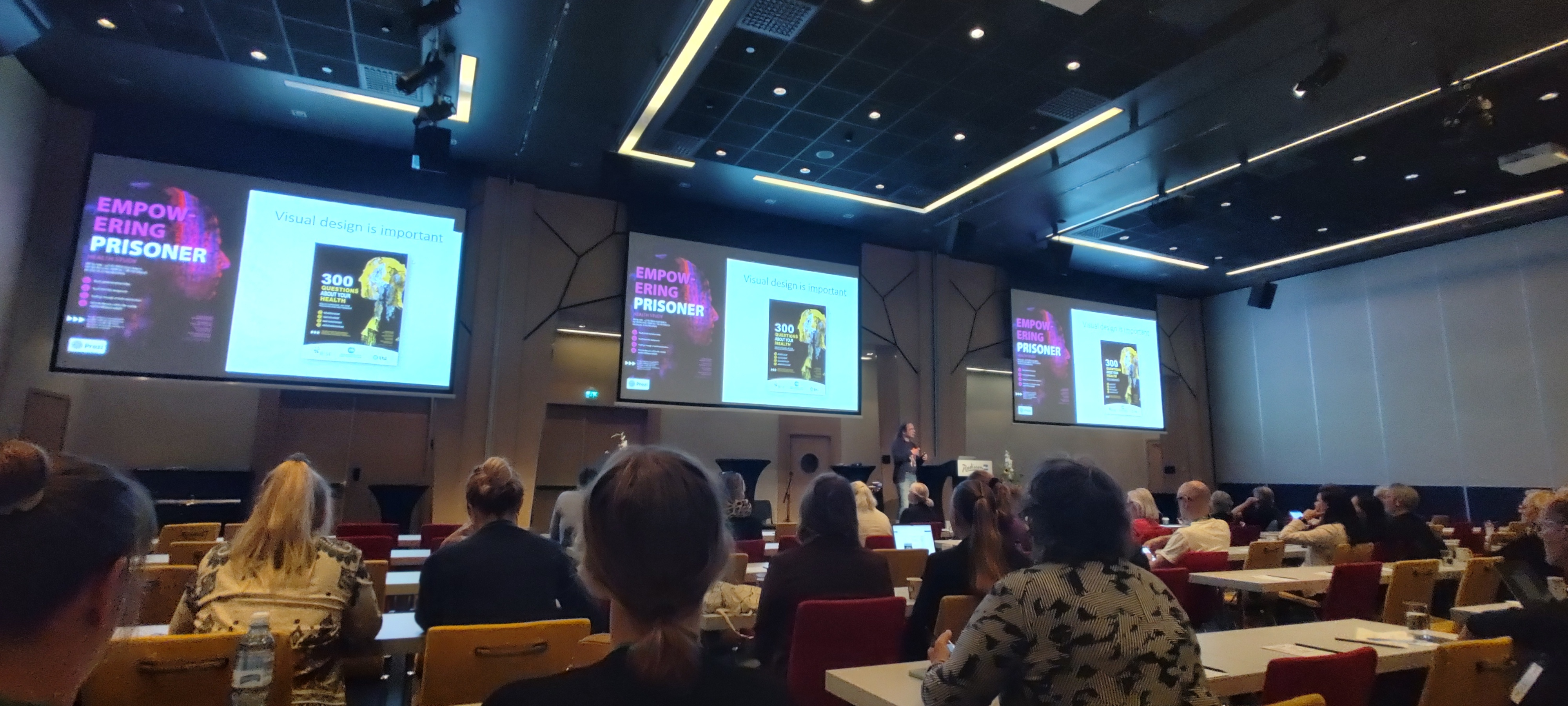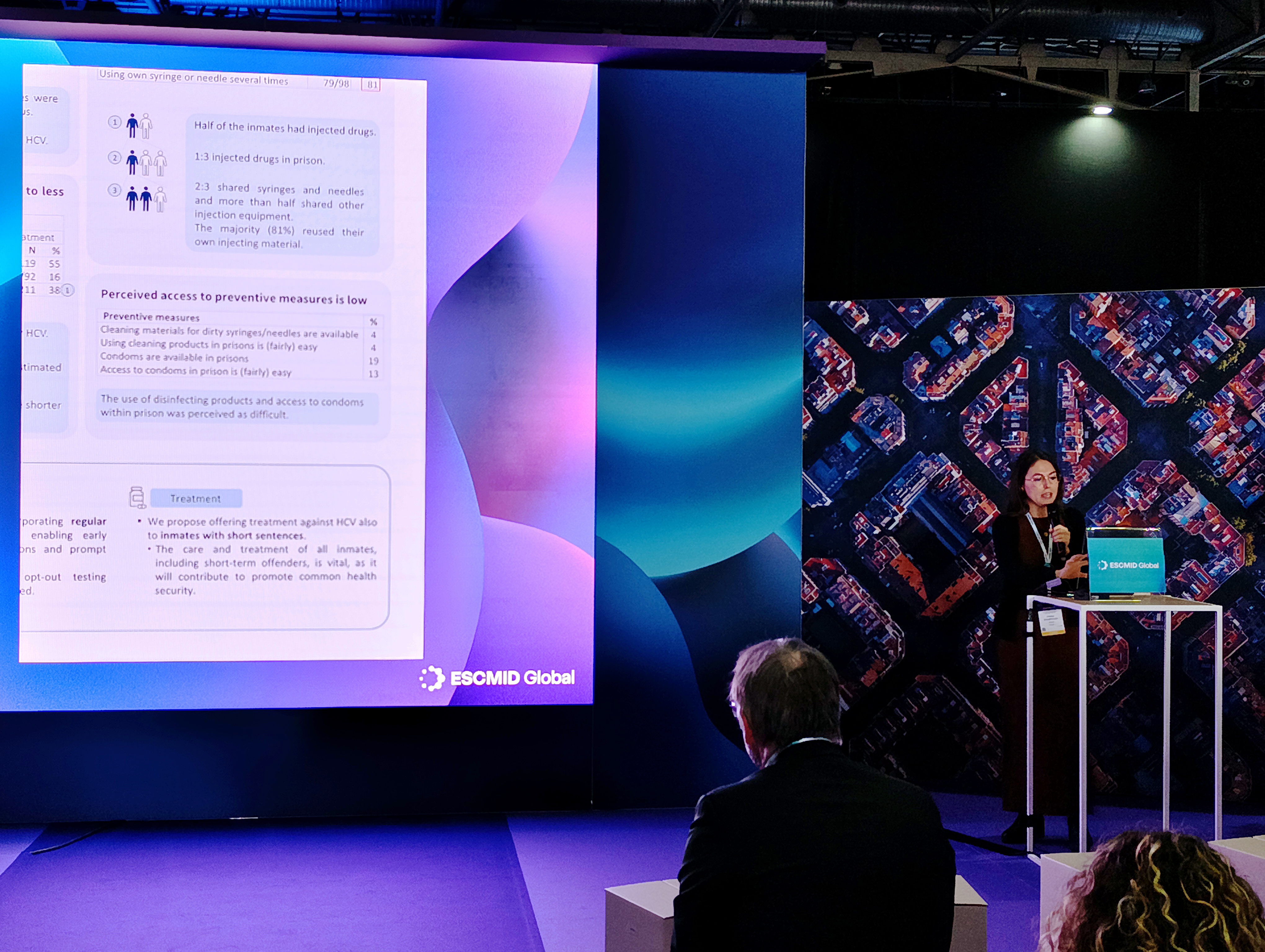Publications and news
This section covers further studies such as articles and doctoral theses as well as other publications and news related to Wattu data.
Ruokolainen O, Ollila H, Sandström P, Härkänen T, Rautanen M. 2025. Smoking cessation services and willingness to receive quitting support among people living in prison in Finland.Link to an external websiteAvautuu uudessa välilehdessä Drug Alcohol Rev.
Abstract: Introduction. Smoking is frequent among people living in prison (PLIP) yet little is known about smoking cessation support in prison. This study aims to investigate correlates of being offered help for smoking cessation and willingness to receive smoking cessation support among PLIP.. Methods. A cross-sectional, nationally representative study of Finnish PLIP in 2020–2022 was used (N = 529 of whom n = 364 (69%) smoked daily) (response rate 82.5%). Dependent variables included not having been offered help for smoking cessation during the prison time and willingness to receive cessation support. Independent variables included socio-demographic, health- and wellbeing-related, and prison-related variables. Regression analyses were utilised. Results. Of daily smoking PLIP, 75% were not offered support for smoking cessation. In the multiple adjusted model, women had a higher prevalence of not being offered help for smoking cessation than men. Among men, the use of pharmacotherapy for smoking cessation (vs. never use) or longer imprisonment time (vs. shorter imprisonment time) were associated with a lower prevalence of being offered help for smoking cessation. Among both genders, at least moderate willingness to stop smoking (vs. low) was associated with a higher prevalence of wishing to receive support for smoking cessation, while smoking 11–20 cigarettes per day (vs. 1–10 cigarettes per day) was associated with a higher willingness to receive cessation support among men. Discussion and Conclusions. Smoking cessation support is wanted among PLIP who are willing to quit smoking, while support services should be targeted more for women and for men who have spent relatively little time in prison.
Lind K, Palomäki J, Castrén S. 2024. Examining Problem Gambling, Substance Use Disorders and Cluster B Personality Traits among Incarcerated Individuals. Addictive Behaviors ReportLink to an external websiteAvautuu uudessa välilehdessä. Volume 20, 2024.
Abstract: Prison populations face heightened rates of addictive behaviors and significant stressors, including health challenges and social disparities. Although problem gambling is prevalent in criminal justice settings, its distinctiveness compared to other addictions among incarcerated individuals remains uncertain. This study examines risk factors associated with problem gambling in Finnish prisoners and explores differences compared to other forms of addiction. Covariates from a questionnaire (N = 527) included gender, age, education, offender status, involvement in theft or property crime, Trauma Screening Questionnaire (TSQ), Depression Scale (DEPS), and lifetime abuse experiences. Of the 527 participants, 330 were interviewed using the Structured Clinical Interview (SCID-II) to assess personality disorders. Multiple logistic regression models were utilized, with separate models for problem gambling (PG), lifetime substance use disorder, and lifetime alcohol disorder. Crime type was not significantly associated with alcohol or substance use problems, but PG was associated with property crime or theft convictions. Borderline personality traits were linked to probable PG, while antisocial traits were linked to drug use, and both traits predicted alcohol misuse. Age and gender were significant only in relation to alcohol use problems, with older age and male gender indicating higher risk. The association between problem gambling and criminal behavior underscores the vulnerability of incarcerated individuals across various domains. Detailed assessments, considering the nature of criminal activity and personality disorders, especially borderline traits and comorbid conditions, are crucial for tailoring rehabilitation and treatment strategies to prevent recidivism. These findings provide valuable insights for clinicians managing addiction and mental health issues within correctional settings.
Rautanen, Mika 2024. Presentation: Monitoring health and wellbeing of prisoners. European Public Health Association (EUPHA) Pre-conference, Portugal, Lisboa, 12th Nov 2024. Session "Bridging gaps in health monitoring: innovative approaches to obtain data from hard-to-reach populations". Link to an external websiteAvautuu uudessa välilehdessä
Rautanen, Mika 2024. Plenary session: How to conduct a multidisciplinary and -method prison study – examples and highlights from Wattu IV population study in Finland. The 20th Ghent Group Meeting, Antwerp, Belgium, Sep 19th–21st, 2024.Link to an external websiteAvautuu uudessa välilehdessä

Levola, Jonna 2024. Presentation 1: Introduction to the Health and Welfare of Finnish Prisoners, and presentation 2: Psychiatric and substance use co-morbidities among prisoners with problem gambling. (Parallel Session 8E)Link to an external websiteAvautuu uudessa välilehdessä. ICBA, 9th International Conference on Behavioral Addictions, Gibraltar, July 8–10, 2024.Link to an external websiteAvautuu uudessa välilehdessä
Castrèn, Sari 2024. Presentation: Finnish prisoners’ problem gambling and relationship to types of crime and re-offending. (Parallel Session 8E).Link to an external websiteAvautuu uudessa välilehdessä ICBA, 9th International Conference on Behavioral Addictions, Gibraltar, July 8–10, 2024.Link to an external websiteAvautuu uudessa välilehdessä
González Pérez, Cristina 2024. E-poster Flash SessionLink to an external websiteOpens in a new tab: Addressing hepatitis C transmission risks: insights from Finnish prisons on injecting drug use, preventive measures, and access to treatment. European Congress of Clinical Microbiology and Infectious Diseases (PDF 547kB) File opens in a new tab pdf 547kB (ECCMIDLink to an external websiteOpens in a new tab, ESCMID Global) 27-30 April, 2024 in Barcelona. The Alphabet of hepatitis viruses session.

Rautanen, Mika 2024. Poster: Health and Wellbeing of Prisoners 2023. WHO Conference on prison health, Amsterdam, the Netherlands, 18–19 April 2024 | Mental health and wellbeing in detention centres: prison health is public health.

Levola, Jonna 2023. Presentation: The Health and Wellbeing of Finnish Prisoners 2023 Wattu IV + Substance Use and Substance Use Disorders. ISAM (International Society of Addiction Medicine) 2024 conference, Marrakech, Morocco, 2.11.2023. Wattu symposium.
Castrèn, Sari 2023. Presentation: Finnish prisoners’ problem gambling and relationship to types of crime and re-offending. ISAM (International Society of Addiction Medicine) 2024 conference, Marrakech, Morocco, 2.11.2023. Wattu symposium.
Koskelo, Jukka 2023. Presentation: Doping Use. ISAM (International Society of Addiction Medicine) 2024 conference, Marrakech, Morocco, 2.11.2023. Wattu symposium.
Castrèn, Sari et al. 2023. Research project: Rikosseuraamusasiakkaiden rahapelaaminen: keinoja uusintarikollisuuden ehkäisemiseksi ja tuen ja hoidon kehittämiseksi
Rautanen, Mika 2023. Article: Vankien terveystutkimus antaa mahdollisuuksia heidän asemansa parantamiseen. Haaste-lehti 4/2023.Linkki toiselle sivustolleAvautuu uudessa välilehdessäLink to an external websiteOpens in a new tab
Nissinen, Annika 2023. Article: Vangeilla paljon reikiä, mutta vähän iensairauksia. Suomen hammaslääkärilehti 12/2023.
Laivonen, Petra 2023. Psychosis in Finnish prison population: Associations of gender, solitary confinement, crime type, forensic psychiatric examination and lifetime imprisonment to lifetime psychotic disordersLink to an external websiteAvautuu uudessa välilehdessä. University of Helsinki. Master's thesis.
- This study cautiously indicates that the prevalence of psychotic disorders in Finnish population may continue to be on the rise. However, due to comparability challenges between previous studies, any conclusions need to be made with caution. According to this study the prevalence of lifetime psychotic disorders is four times higher in prison population compared to population outside prison. Female gender and solitary confinement seem to increase the risk of psychotic disorder. High substance use disorder and personality disorder comorbidity among prisoners suffering from psychotic disorders reflects the complex nature of prisoner mental health, an issue needed to be carefully addressed when planning and executing treatment during and after imprisonment.
Raivisto, Anne 2023: Miesvankien keinoja aggressiivisen olon vähentämiseen. Metropolia AmmattikorkeakouluLink to an external websiteAvautuu uudessa välilehdessä. YAMK-opinnäytetyö.



